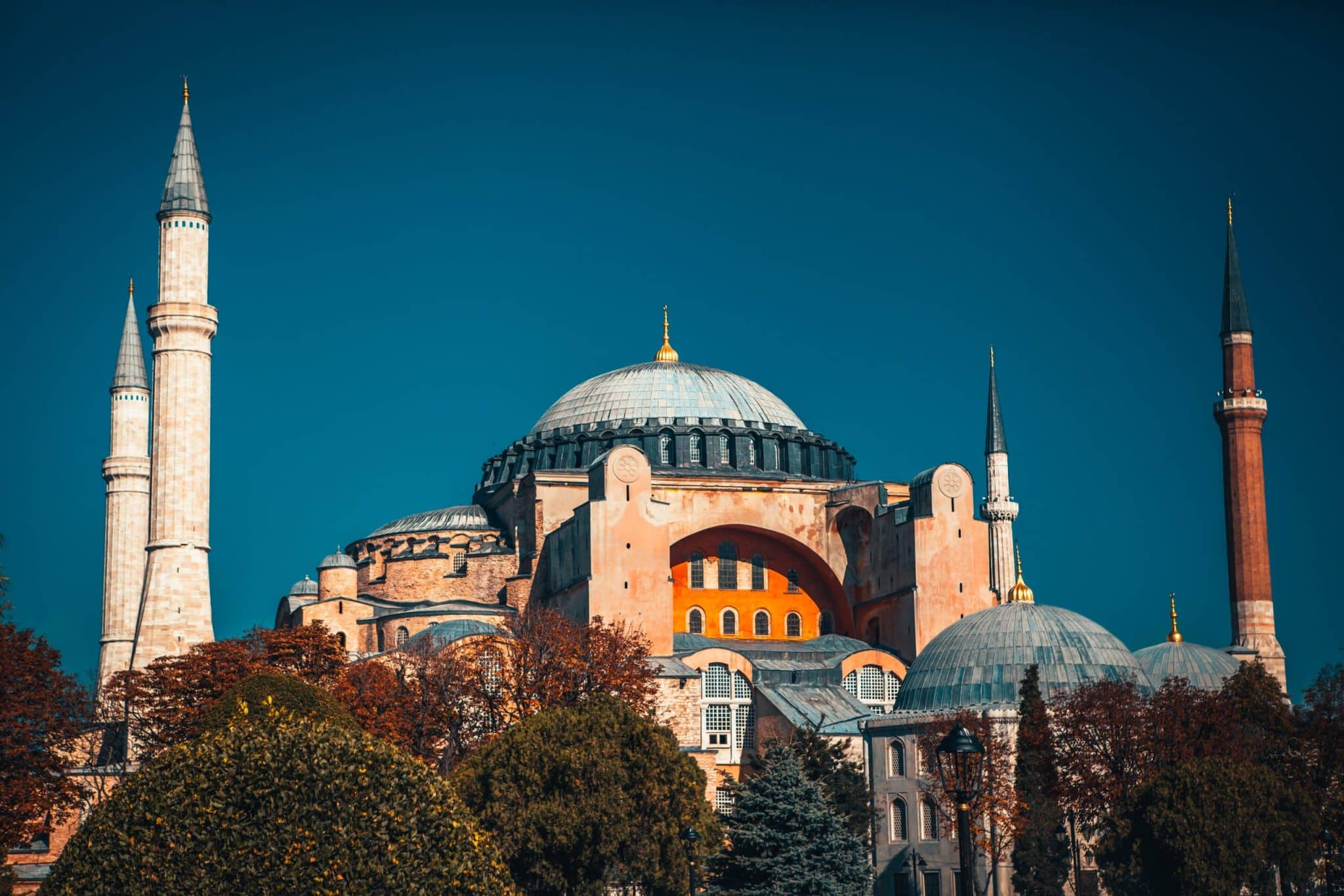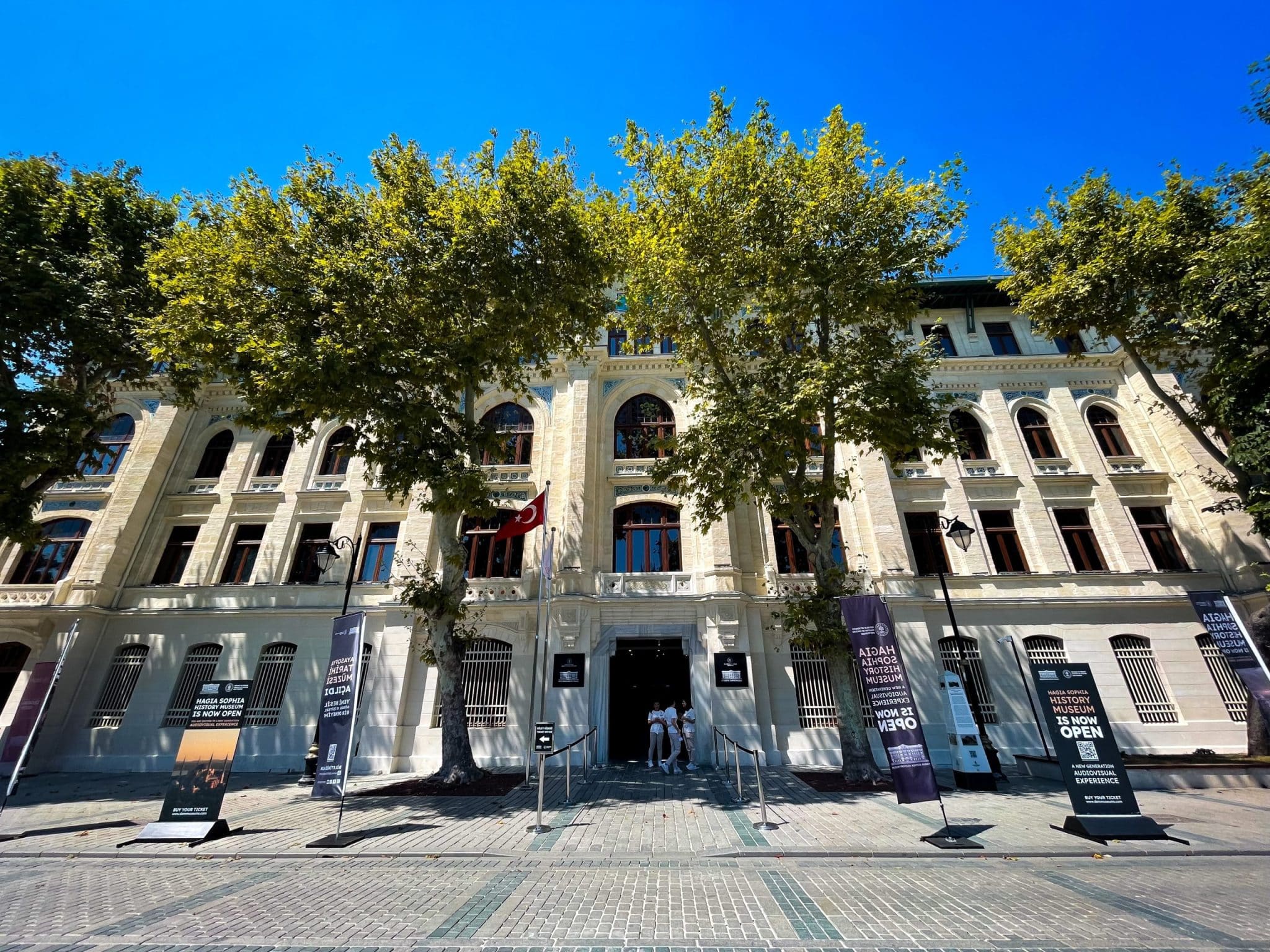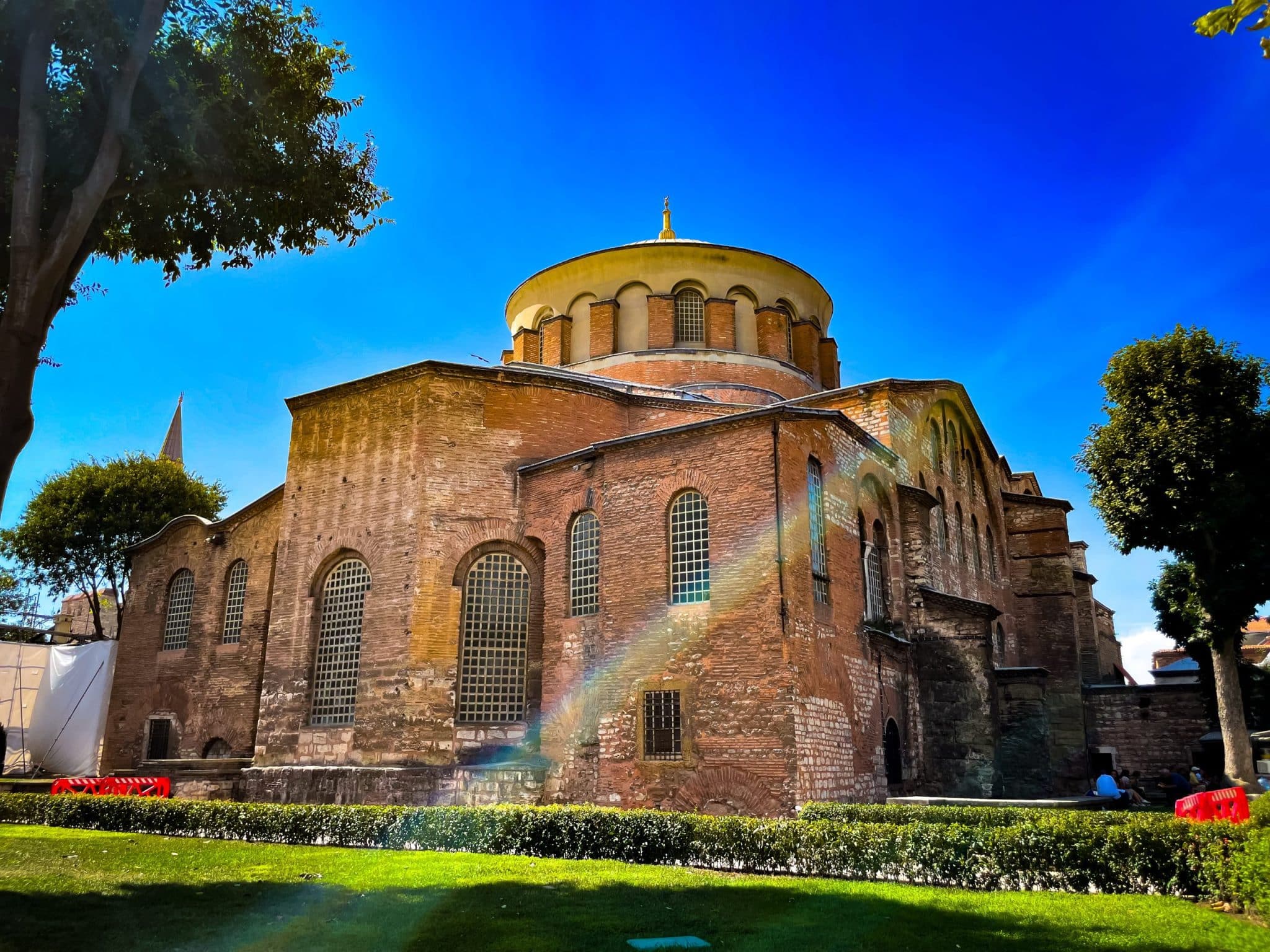About Hagia Sophia
The Hagia Sophia, Hagia Irene Church, and the Hagia Sophia History Museum are intertwined in Istanbul's history. They represent adaptability, transformation, and preservation. Hagia Sophia is generally the focus of attention, but its sisters, Hagia Irene and the Hagia Sophia History Museum, add to the city's rich culture. These three sisters, with their intertwined histories, stand as a testament to Istanbul's enduring role as a bridge between East and West.
Next to Hagia Sophia lies Hagia Irene Church, or "Holy Peace" in Greek. It has an exceptional history. Emperor Constantine I built it in the 4th century AD as an Eastern Orthodox cathedral before Hagia Sophia. It is Istanbul's only preserved Byzantine church since the whole of the years. Occasionally, it hosts concerts, exhibitions, and cultural events.
The complex's Hagia Sophia History Museum has a large collection of artefacts, mosaics, and religious objects from various times. Visitors are greeted at the door and led through the museum. Roman Empire and Ottoman Period exhibits are part of the museum's extensive audiovisual experience on the top two floors.
Istanbul's Hagia Sophia, Hagia Irene Church, and Hagia Sophia History Museum are architectural marvels that reflect the city's rich history and culture.
About Hagia Sophia Mosque
The magnificent Hagia Sophia in Istanbul, Turkey, evolved throughout time. This UNESCO World Heritage Site is a global treasure. It has symbolised cultural development, creative excellence, and religious concord since its construction as a cathedral. For over a millennium, Justinian I's 6th-century cathedral served Eastern Orthodox Christians. It became a mosque in 1453, uniting two major civilizations. Turkish secularism was reflected in its 1935 museum conversion. For over a millennium, Hagia Sophia has been the world's biggest cathedral due to its towering dome, beautiful mosaics, and architectural prowess.
About Hagia Sophia History Museum
The Hagia Sophia History Museum opened in 2023. Hagia Sophia's 1700-year history is told through audiovisuals.Beginning on the third level, visitors are guided through the museum, examining the Roman Empire and Ottoman periods. Through frameless windows, the museum also displays the cathedral, mosque, museum, and mosque galleries, as well as the Eastern Roman cistern. This distinct experience provides a comprehensive comprehension of the rich history of Hagia Sophia.
About Hagia Irene Church
Emperor Constantine constructed the Hagia Irene cathedral, Istanbul's second-largest Byzantine cathedral, in the early 4th century. The church, whose name means "Holy Peace" and was named after a saint, was burned during the Nika disturbances of 532. The precise date of its restoration by Emperor Justinian is unknown. After the conquest of Istanbul, the church was incorporated into the grounds of Topkap Palace, where it remained unaltered. During the reign of III. Ahmet, it was used as a warehouse, armoury, and museum in Turkey, with artefacts from the empire on exhibit.Between 1908 and 1949, the church functioned as a military museum.
Hagia Sophia Admission Tickets with Audio Guide
Save your time with these skip-the-line entry tickets to Hagia Sophia, with an audio guide in 23 languages. Marvel at the beauty of this UNESCO World Heritage site. + more details
Explore the Hagia Sophia with a local expert on a guided tour, then skip the lines to explore its breathtaking upper gallery interior with an audio guide. + more details
See 3 of Istanbul's most famous landmarks with this combination tour. Skip the ticket lines at the Basilica Cistern and Hagia Sophia, and visit the Blue Mosque with an English-speaking guide + more details
Your Full Experience pass to discover the fascinating history of Hagia Sophia: Mosque & Interactive Museum. + more details



